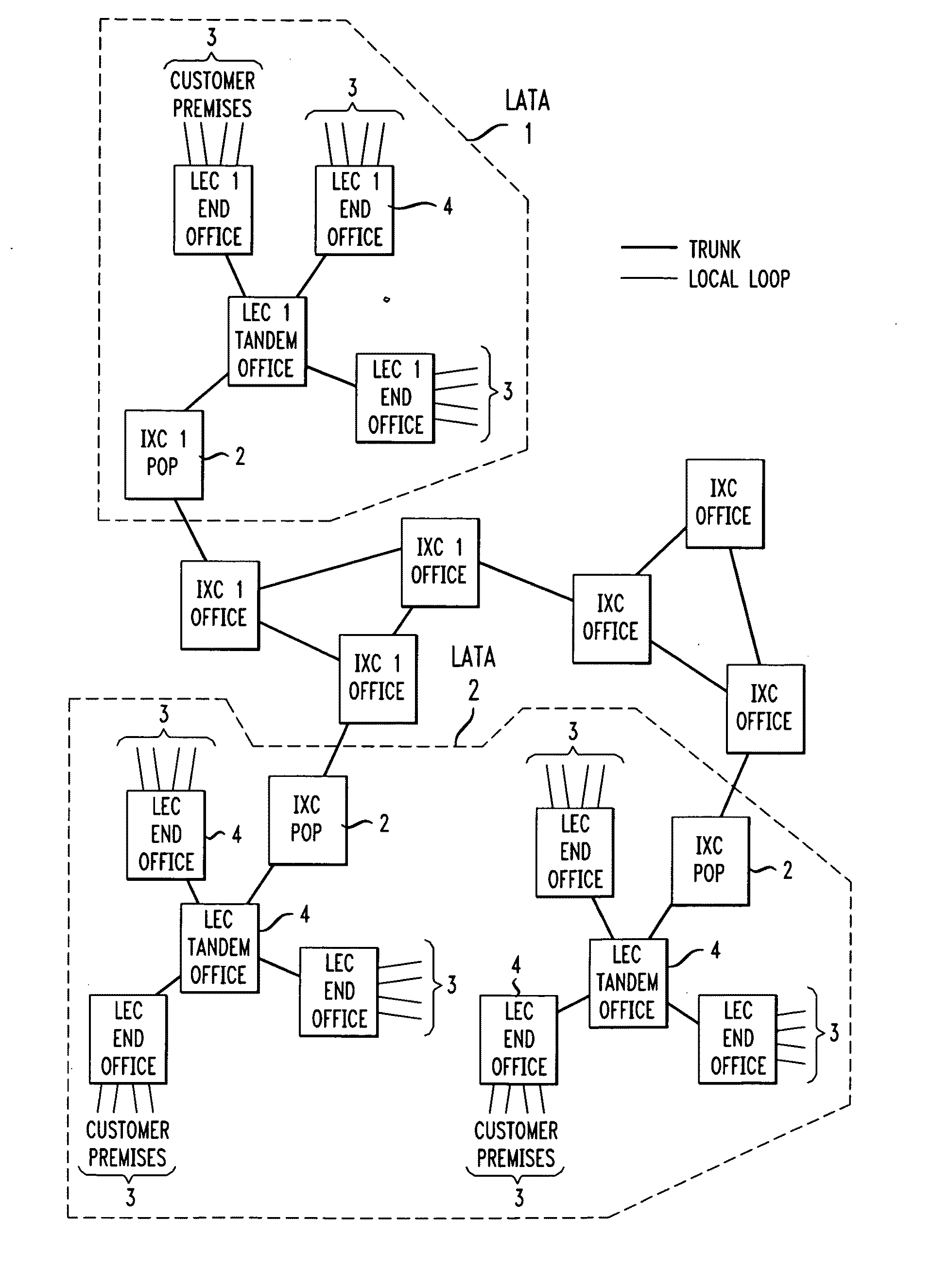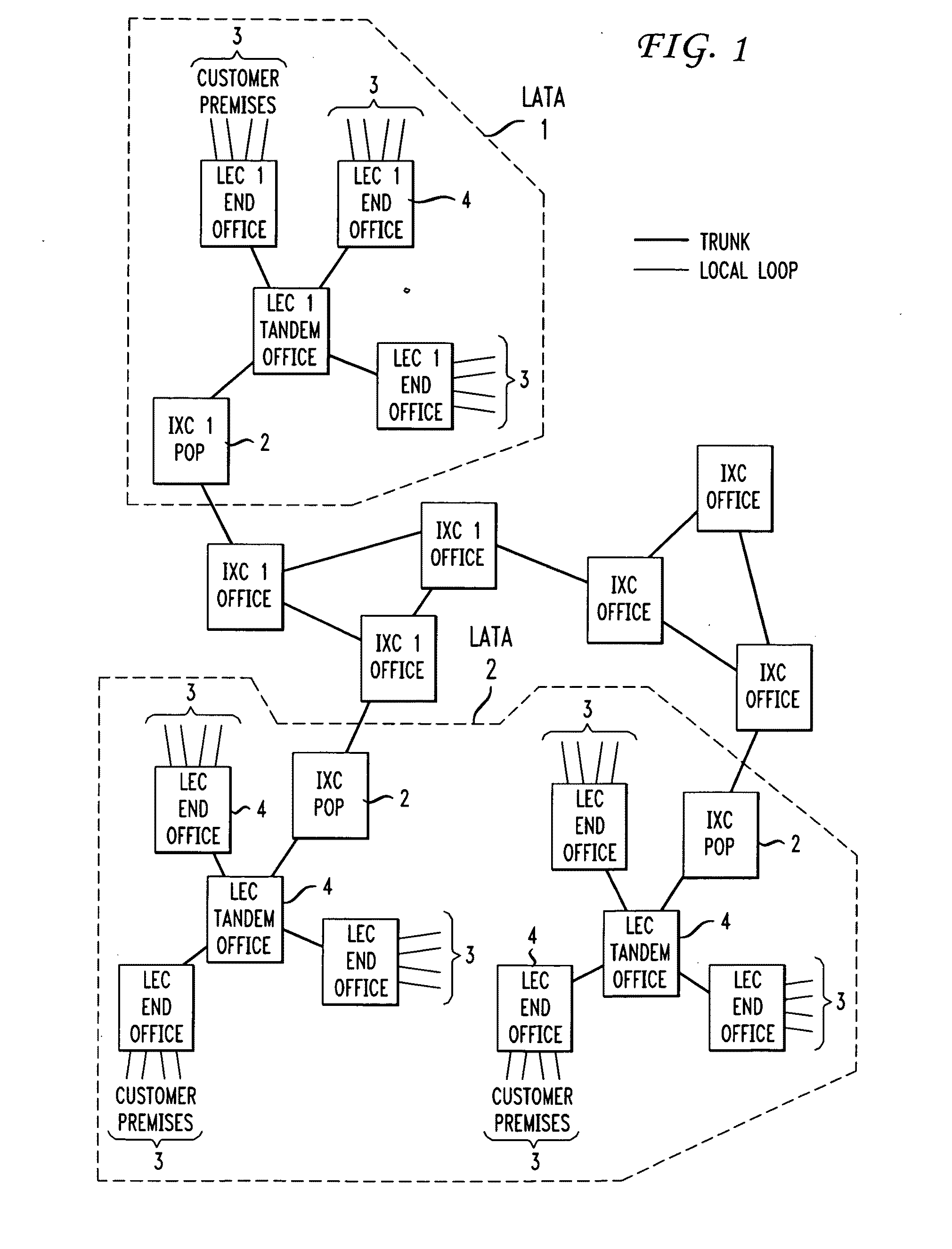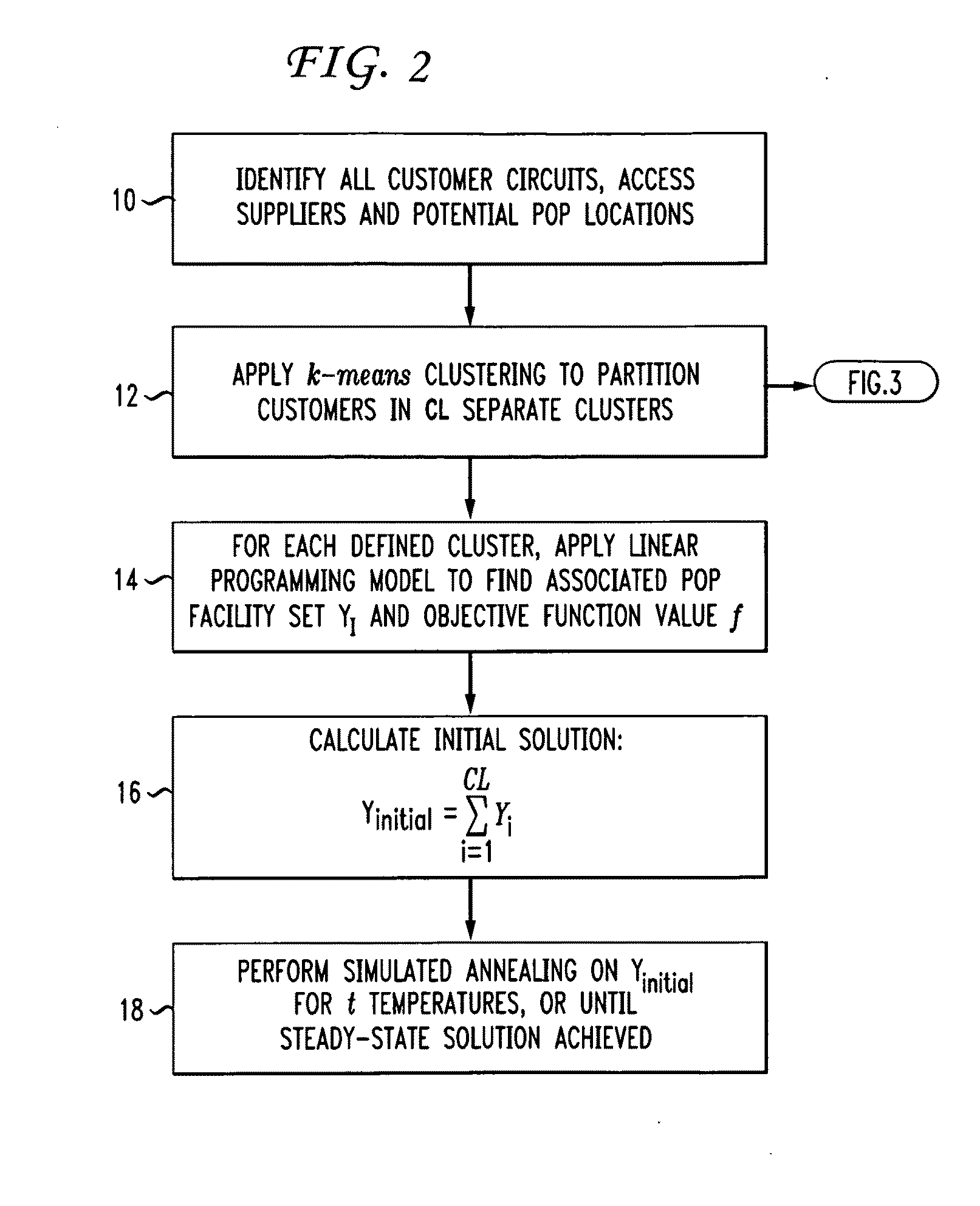Method for optimizing network "Point of Presence" locations
a network and location technology, applied in the field of network " point of presence " locations, can solve problems such as inefficiency of methods
- Summary
- Abstract
- Description
- Claims
- Application Information
AI Technical Summary
Benefits of technology
Problems solved by technology
Method used
Image
Examples
Embodiment Construction
[0020]As mentioned above, a telecommunications carrier needs to interface with other network carriers in order to exchange network traffic and properly service its customer base. “Points-of-Presence” (POPs) for a given carrier are the network locations where such interface occurs. The number and location of the POP facilities directly impact the telecommunications carrier's network transport costs in terms of both the leasing costs it must pay to other carriers and its own “backbone” transport cost (the term “backbone” refers to the transport of network traffic among a carrier's POPs). Moreover, the POPs can be configured to different levels of capability and capacity to support various transport technologies, network equipment types, products and services.
[0021]In particular, the number of POPs, their location and type needs to be determined by the geographical distribution of the carrier's customer base (and, preferably, includes future forecasts of customer geographic locations),...
PUM
 Login to View More
Login to View More Abstract
Description
Claims
Application Information
 Login to View More
Login to View More - R&D
- Intellectual Property
- Life Sciences
- Materials
- Tech Scout
- Unparalleled Data Quality
- Higher Quality Content
- 60% Fewer Hallucinations
Browse by: Latest US Patents, China's latest patents, Technical Efficacy Thesaurus, Application Domain, Technology Topic, Popular Technical Reports.
© 2025 PatSnap. All rights reserved.Legal|Privacy policy|Modern Slavery Act Transparency Statement|Sitemap|About US| Contact US: help@patsnap.com



